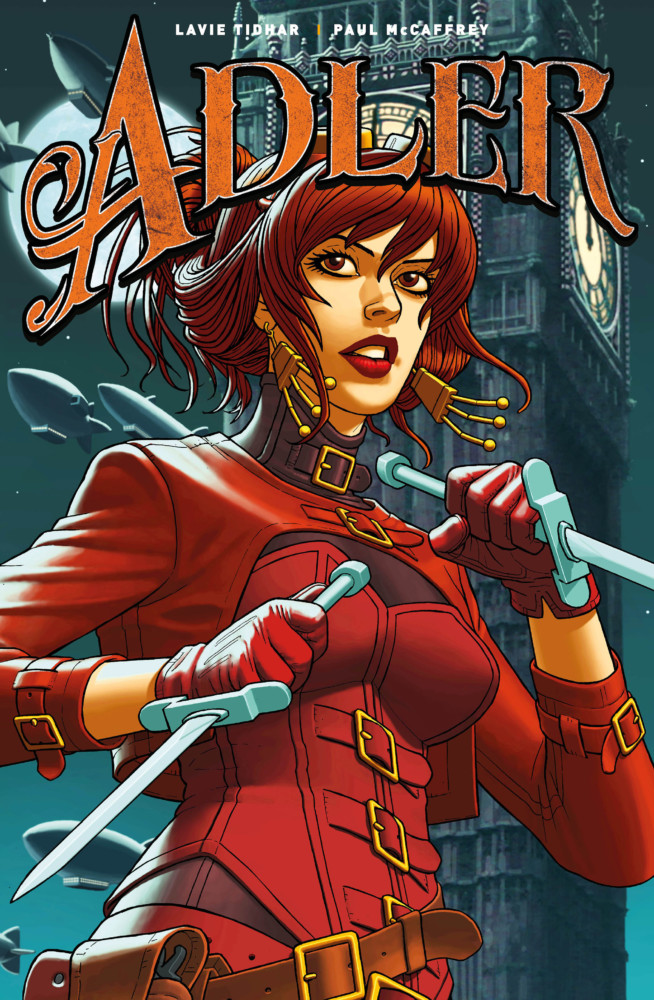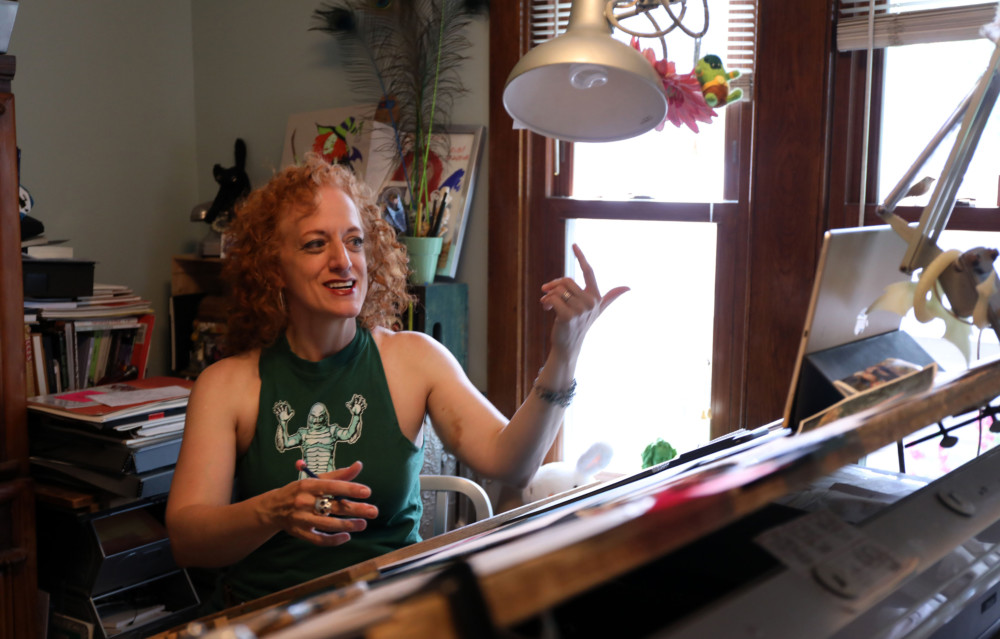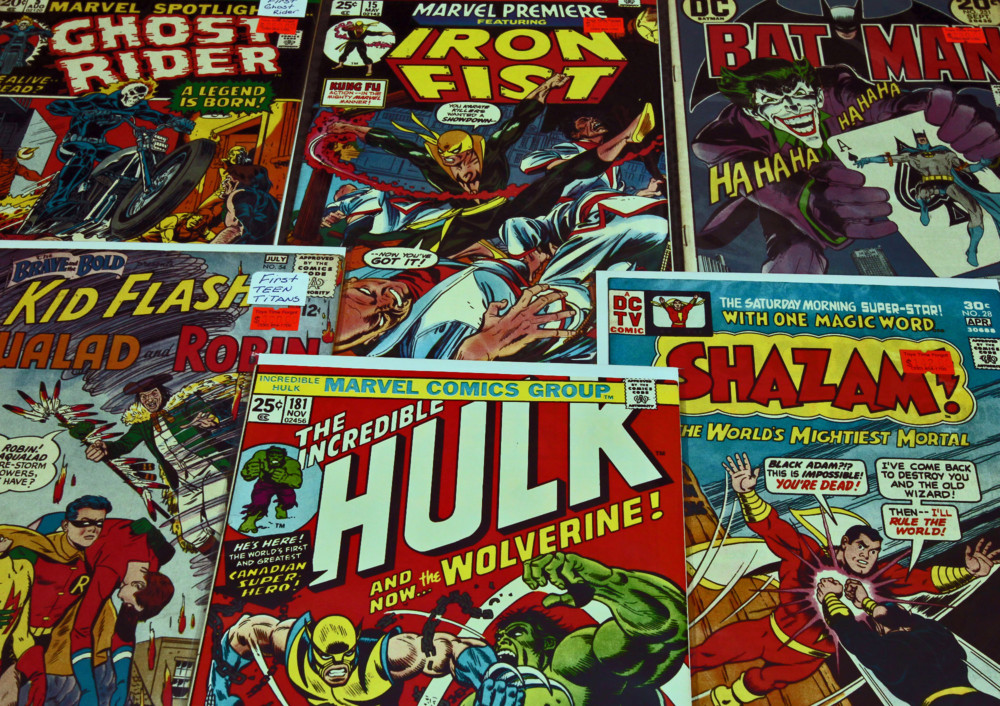Andrew A. Smith
Tribune News Service
WWR Article Summary (tl;dr) Andrew Smith takes a look at three female-centric comics that vary in style but all are similar in that they feature strong women.
Tribune
We’ve just wrapped up Women’s History Month, but the importance of women in comics is pretty much a year-round thing.
Case in point: Three female-centric graphic novels this month that come highly recommended.
Sabrina the Teenage Witch Vol. 2: Something Wicked
Archie Comics, $14.99
One of the best aspects of Sabrina is that unlike the other characters at Archie Comics, she hasn’t been in continuous publication for 80-plus years. While the kids in Riverdale are frozen in the public’s mind as to who and what they are, Sabrina’s status quo can be a bit more flexible.
“When it comes to witchcraft, people tend to see it in extremes,” Greendale’s teenage witch muses at the beginning of “Something Wicked,” the second collection in her current incarnation. “It’s either all evil. … Or it’s all sunshine and rainbows.”
How true, since that has been the case in different iterations of Sabrina comics, from her swinging ‘60s adventures to the horror-themed tales of the 2010s.
The current Sabrina comics tend to favor the “Chilling Adventures of Sabrina” TV show version of the character, in that she deals with dead-serious magical problems while also juggling the typical humor and heartache of high school. She is even torn between two potential boyfriends like on Netflix: the ever-loyal Harvey Kinkle, and bad boy Ren Ransom (who subs for TV’s Nicholas Scratch).
But this version is definitely its own thing, with the youngest and hippest versions of Aunt Zelda and Aunt Hilda to date. Also unlike the TV show, her cat Salem can talk (and give advice that is always ignored).
These are details, of course; the main attraction is Sabrina herself. And any character is like Sabrina’s summation of magic: “How good or bad it is depends on the character of the person wielding it.”
There’s no need to worry about that here, with Kelly Thompson (writer) and Veronica and Andy Fish (illustrators) doing the wielding. This Sabrina is as adorkable and good-hearted as any — despite having to deal with Wendigos and a murderous fellow witch.
“Sabrina: Something Wicked” is recommended because it’s actually something charming.
Adler Vol. 1
Titan Comics, $16.99
The conceit of “Adler” is that it resembles Alan Moore’s “League of Extraordinary Gentlemen,” except in this case, it’s gentlewomen. Writer Lavie Tidhar plucks various female characters from Victorian adventure fiction and throws them together for a story that is one part 19th century reserve and two parts rip-snorting action.
Tildhar places the action in 1902 London, so a number of characters have to be updated from their 19th century origins to fit the new era. For example, our narrator (and reader POV) is Jane Eyre — but she is no longer the independent-minded governess she was in her eponymous 1847 novel, but instead an even more capable character, a former battlefield medic who served in the Boer War.
She quickly becomes the Dr. Watson to our titular character, Irene Adler. You may remember her as the opera singer and formidable intelligence from “A Scandal in Bohemia,” in which Sherlock Holmes referred to her with some exasperation as “that woman!” Adler is described here as an “American adventuress” — she’s from New Jersey, here and in the Arthur Conan Doyle canon — and is clearly Holmes’ equal. That’s established early on when she figures out that Jane had performed surgical duties, that she’d just returned from South Africa, that she’d lost someone close in the war and that she’d been injured by shrapnel — all by observation and deduction.
If you’re waiting for Holmes to show, don’t bother — this is Adler’s story, not his. The famed detective is described as being out of town throughout this story, searching for the hound of the Baskervilles in Devon. This situation has been arranged by Holmes’ arch-enemy, Professor Moriarty, who does appear.
“A wise man knows to keep his friends close,” Moriarty says to his flunky, Col. Moran, “and his enemies in the West Country.”
But the “Napoleon of Crime” isn’t the main villain. In fact, Irene tosses shade on both him and Holmes, asserting that the professor “is not as significant as some might make him out to be.”
Instead, as you might guess, our Big Bad is a she. Literally. It is “She Who Must Be Obeyed,” a.k.a. Ayesha, from H. Rider Haggard’s 1887 novel “She: A History of Adventure.” The Amazonian She is accompanied by her equally Amazonian warriors, and a vampire named Carmilla, from the 1872 Gothic novella of the same name. They are in search of dangerous information from a non-fiction Victorian heroine, Madame Curie.
Meanwhile, Adler and Eyre are aided by Estella Haversham (from “Great Expectations”) and a little orphan named Annie. There’s more; virtually any character given a name is worth the Google search, from Phileas Fogg (“Around the World in Eighty Days”) to Prince Rudolf of Ruritania (“The Prisoner of Zenda”).
“Adler” wouldn’t be nearly as engaging without the lush, expressive art of Paul McCaffrey. His work speaks of all sorts of influences, from the Franco-Belgian school to manga to steampunk to airbrush. It’s polished and elegant, like the story.
So hurry up and read “Adler,” already. As she herself says at one point, “the game is underfoot!”
Fat
Graphic Mundi, $17.50
Is “Sabrina” too silly for your taste? “Adler” too lowbrow? Well, you can’t say that about “Fat,” an autobiographical story by Austrian artist Regina Hofer that is layered, educational — and very, very painful. Brace yourself.
Through stark black-and-white artwork, employing images both literal and symbolic, Hofer documents her battle with food disorders (primarily anorexia and bulimia), dysfunctional and abusive home life and feelings of depression, failure and existential despair.
I have no idea where one gets the courage for this sort of bare-all confessional. But I do know it’s effective. I have never understood eating disorders, having never experienced one. But Hofer brings it home viscerally — what I don’t comprehend intellectually, she brings home emotionally. I don’t analyze her spiraling emotional crisis so much as I feel it.
By the same token, I don’t fully understand all the symbolism or surreal imagery Hofer employs when literal representations are insufficient. But I do feel them.
“Fat” isn’t an uplifting bildungsroman. But it’s an important story, one that will explain the suffering millions of people endure better than any doctor.
Tribune Content Agency, LLC

















































































































































































































































































































































































